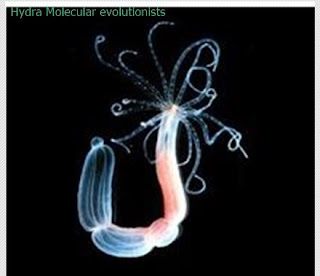Tentacles of Hydra
Tentacles of Hydra are extraordinarily extensible and can be four to five times the length of the body native to the temperate and tropical regions.
According to MANY recent article, this information points to the evolutionary DNA, the Subject is the protein’s amino acid sequence from the human gen is nearly identical between the species after 700 million years of “evolution”.
Hydra Molecular evolutionists
Many members of the Hydrozoa go through a body change from a polyp to an adult form called a medusa. However, all Hydra, despite being hydrozoans, remain as polyps throughout their lives.Hydra mainly feed on aquatic invertebrates such as Daphnia and Cyclops.
Many members of the Hydrozoa go through a body change from a polyp to an adult form called a medusa. However, all Hydra, despite being hydrozoans, remain as polyps throughout their lives.Hydra mainly feed on aquatic invertebrates such as Daphnia and Cyclops.
Hydra: Heracles battling the Lernaean Hydra Greek legend, the offspring of Typhon and Echidna (according to the early Greek poet Hesiod’s Theogeny), a gigantic monster with nine heads (the number varies), the centre one immortal. The monster’s haunt was the marshes of Lerna near Argos. The destruction of Hydra was one of the 12 Labours of Heracles,assistance of Iolaus. As one head was cut off, two grew in its place.
SEE THE FORMATION OF CONSTELLATION OF CRAB
SEE THE FORMATION OF CONSTELLATION OF CRAB




Comments
Post a Comment